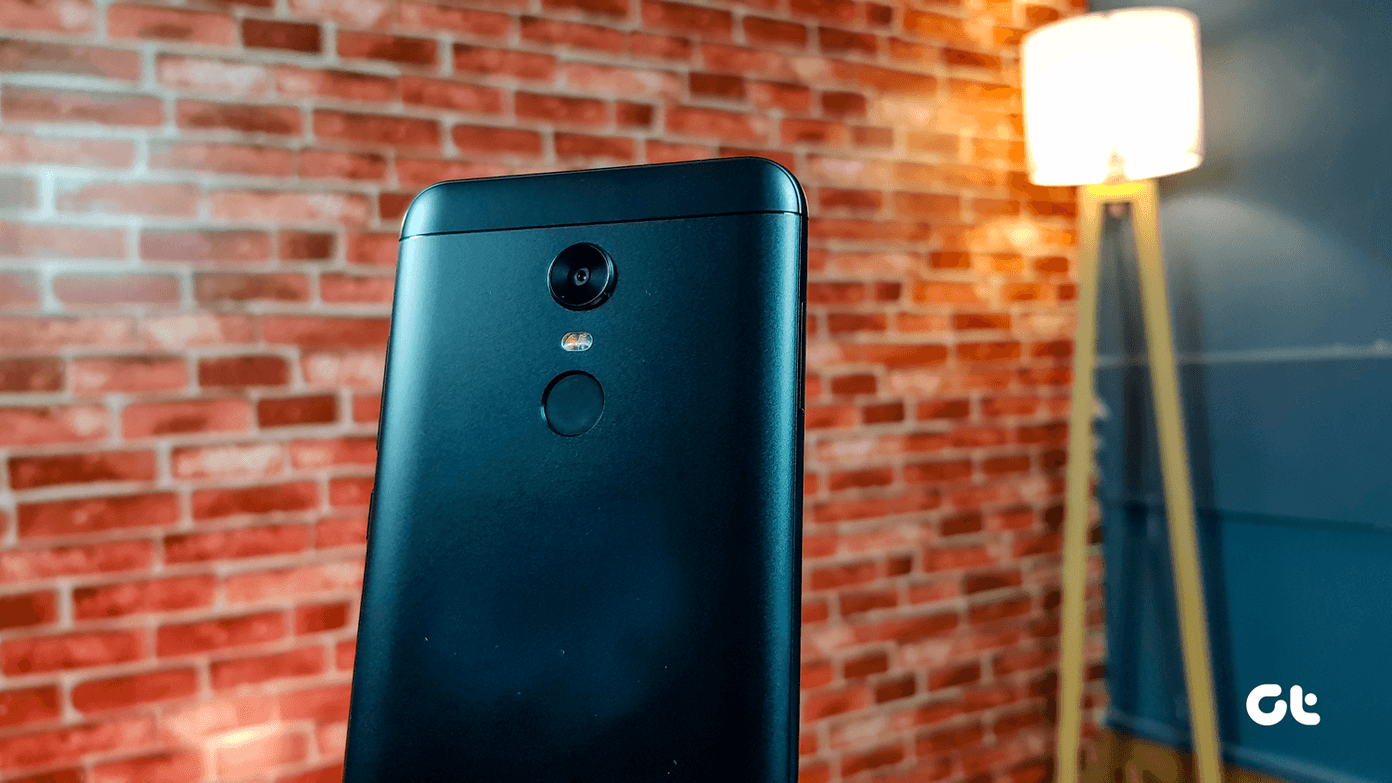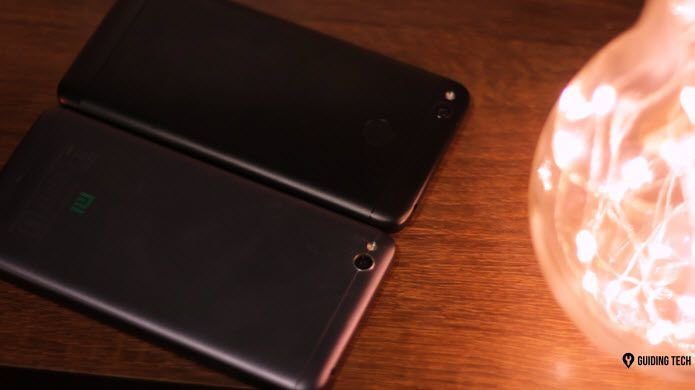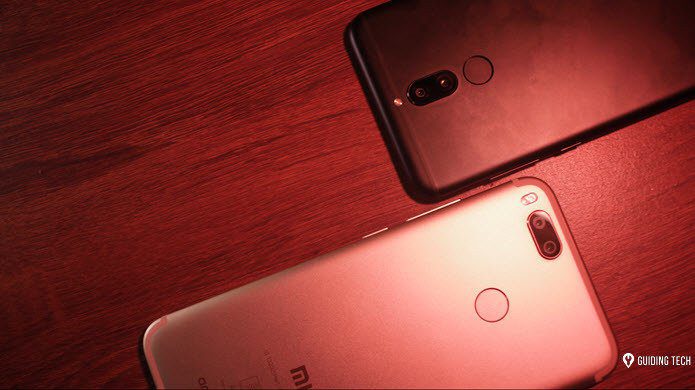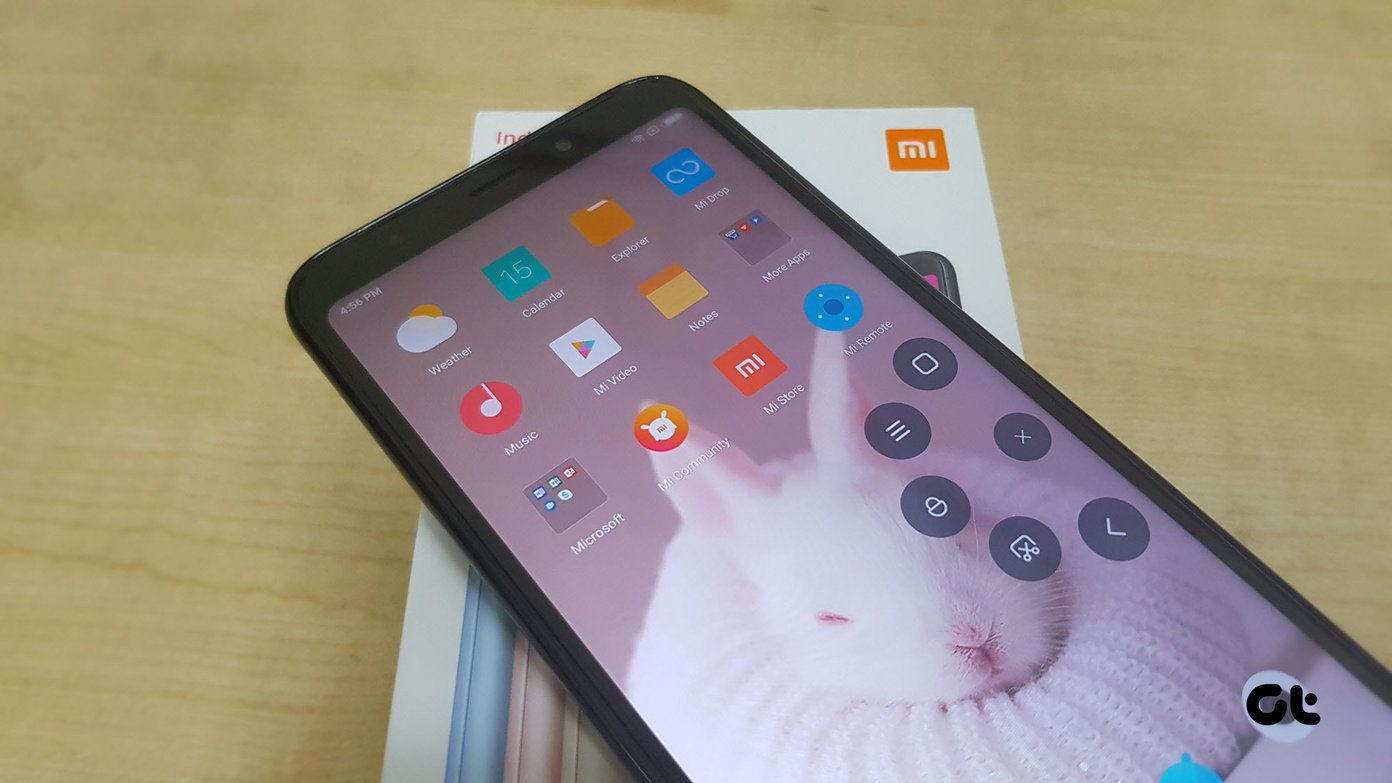I have been using the phone for around 2 weeks now and here’s a summary of my experience with it. If you need help in making up your mind about investing in the phone then read on.
Design
The Redmi 2 looks like its predecessor in terms of build, with the 4.7″ display. The corners are rounded and the back cover has bit of a matte finish. When compared to previous devices like Mi 4 and Note 4G, Redmi 2 does not tend to slip away on occasions and leaves no fingerprints on the back cover. The matte finish with slim design and sleek edges give the phone a premium finish and you never feel like you are compromising. The back cover along with the battery is removable with two micro SIM card slots and a micro SD card slot that can take up to 32GB. Compared to Redmi 1, the phone is only 133g, which makes it 15g lighter The front panel has capacitive non-backlit navigation keys. The LED notification is near the home button and the right-hand edge holds the power and volume rockers – typical design from the house of Xiaomi. The AGC Dragontrail Glass makes the screen shatter and scratch-proof and I personally tested it with keys and a knife; the results were quite impressive. There was no scratch even after deliberately attacking the glass with a pair of scissors. So all in all, design-wise the phone stands out and gives you the feeling of a premium phone.
Hardware and Benchmark
Redmi 2 is powered by a Snapdragon 410 quad-core 64-bit processor with a Cortex A53 CPU. The quad-core processor is clocked at 1.2 GHz and has an Adreno 306 GPU. The RAM is just 1GB with an internal storage of 8GB, leaving around 5.5 GB usable for the user. The expandable slot can hold up to 32GB, but Xiaomi officials told me that users can give 64GB cards a shot and it could work. That’s not coming from us though. In the performance mode, the device benchmark scores on Antutu were around 20K to 22K, which is pretty decent for the price. The only thing that lags out is the 1GB of RAM. More RAM is one thing users might start missing after spending some time with the phone.
Display and Touch
Xiaomi phones have always given display high importance and the Redmi 2 is no different. It has a 4.7″ display with a resolution of 1280×720 in HD. The 312 PPI adds a nice touch and everything looks clear and vibrant at different angles. The display is fully laminated and removes the gap between the glass and LCD, making the pixels much closer to the fingertips. Movies or games, everything looked good in the room viewing. But when you look at the phone in the bright sunlight even at the highest brightness, all you see are fingerprints and glare. Normal operations would be manageable, but in situations like these, gameplay and video calls are not advisable. The touch experience was fabulous with the super-responsive screen. Be it typing, texting, gaming, or video viewing, Redmi 2 display will never let you down.
Camera
Redmi 2 has an 8MP main camera with flash and a 2MP front camera for video calling and selfies. The back camera comes with five precision lenses and can take stunning photos even in low lighting conditions. The HDR photos look pretty vibrant and the 11 live filters make it easy to apply real-time effects while taking photos. The camera launches and initializes quicker when compared to Redmi 1, but the focus time is pretty much the same. Here are some of the photos taken with the Redmi 2. The front facing 2MP camera is not what everyone looks for these days. Looking at the present trend where the front camera gets the same treatment as the main camera, Redmi 2 lags behind. The photos captured are good enough for social media, but can become pixelated when printed as a collage. Most people ask me what’s the use of detecting a person’s age and gender in the front camera, and I asked the same question to Xiaomi folks at the launch event. According to them, the MIUI 6 beautify feature applies 36 smart filters based upon gender and age to make selfies look more polished.
Gaming
Looking at the processor and the GPU, most of you might think that the Redmi 2 will excel in gaming. But wait… even I thought the same and couldn’t be more wrong. The 1GB internal RAM is a deal breaker, because with system processes running in the background, only 300 to 400 MB are left usable even when you kill every app. While games like Subway Surfer and Temple Run ran without any lag, high end games like Asphalt 8 and Modern Combat lagged a lot on full graphics. However, if you compromise on the graphics and play on the lowest settings, the games are playable. The device didn’t heat up as much as the Mi4, but some heating was there and that’s one thing every phone will have. But still, not a gaming phone after all. Another roadblock is the 5GB of usable RAM. Many games require internal memory to store gaming data files, you would be able to install just one or two games at a given time. But if you root your Redmi 2 (yes… we’ve already got that covered), you would be able to store the game data files to the SD Card.
Battery
The device is powered by a 2200 MAh removable battery and it’s more than enough to last for a day. For me, on average the battery lasted for around a day and a half with 3G and Wi-Fi on. The processor supports quick charge technology 1.0 and the phone charged from 3% to 43% in just 30 minutes. But the full charge took close to 4 hours. While playing games, watching videos, and streaming music, the battery lasted for approximately 10 to 11 hours on auto brightness. So all in all, the battery is one of a kind in this price range and can be valued as one of the assets of the phone.
Pros and Cons
My Verdict
If you are looking for a smartphone for normal use, not for gaming and selfies, I would definitely recommend the phone. For the price tag of just Rs. 6,999 I am sure you won’t find a better phone in the market. At least for now. The above article may contain affiliate links which help support Guiding Tech. However, it does not affect our editorial integrity. The content remains unbiased and authentic.



































